| Encyclopedia of Tours and Travel to Rajasthan, featuring information on Fairs & Festivals, Wildlife, Excursion, Adventure and Weather of Rajasthan. |
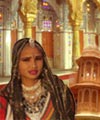 |
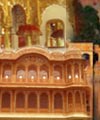 |
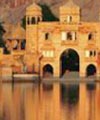 |
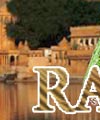 |
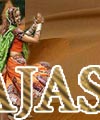 |
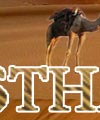 |
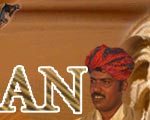 |
||
|
Jaisalmer
Jaisalmer - the golden desert city of Rajasthan. It still bears the look of a quaint medieval town where chivalary and honour were the order of the day. 275 Kms from Jodhpur, also called "Golden City" was founded by Rao Jaisal. Famous for the Jaisalmer Fort, Patwon-ki-haveli, sand dunes, and ideal for camel rides and safaris. History Bahti Rajputs of Jaisalmer were fedual chiefs who lived off the forced levy on the caravans laden with precious silks and spices that crossed the territory enroute Delhi-or-Sind. These caravans earned the town great wealth. Culture Colorful craft bazaars are set up for the occasion and a sound and light spectacle is organized wit folk artists performing against the splendid backdrop of the famous Sam sand dunes on the full moon night. Surely a not-to-be missed event. Fort Above the fort flies the Jaisalmer standard, which features a chatri against a red and yellow background. The fort looks especially magical when it is lit up at night. It is fascinating to9 wander around this living fort. It is packed with houses, temples, handicraft shops and honeycombed with narrow, winding lanes, all of them paved in stone. It is also quite as vehicles are not allowed up here. Even building materials have to be carried up by camel cart. The fort walls provide superb views over the old city and surrounding desert. Strolling around the outer fort ramparts is a popular activity at sunset. The fort is entered from First Fort gate tough it is forbidding series of massive gates via an enormous stone paved ramp, which leads to a large courtyard. The former Maharaja's seven storeys Palace, Rajmahal, fronts onto this. The square was formerly used to review troops, hear petitions and present extravagant entertainment for important visitors. Patwon-ki-Haveli The first haveli is a private museum and shop, featuring displays of old furnishings and household items. The second and fifth havelis are government run. They are empty but you can wander around and soak in the atmosphere. Only the ground floor is open on the second haveli. The third haveli is an antique shop and the fourth, a private residence, is not open for public. Tazia Tower Gadisar lake The Jain Temple The first temple you come around is the one dedicated to Chandraprabhu, the eighth tirthankar (Jain Teacher), whose symbol is the moon. It was built in 1509 and features fine sandstone sculpture in sandstone in Mandapa (Fore chamber of the inner sanctum of the temple). To the right of the Chandraprabhu Temple is Rikhabdev temple. There are some fine sculptures around the walls protected by glass cabinets, and the pillars are beautifully sculpted with apsaras (Celestial Maiden) and gods. This temple has a lovely and tranquil atmosphere. Other temples which may be currently closed to the non - Jains, include the temple dedicated to Parasnath, a few steps behind Chandraprabhu. Entry is via an enormous and beautifully carved torana (Gateway) that culminates the image of the Jain tirthankara its apex. There is a voluptuous carving of an apsara balancing a set of balls on her raised forearm.
A door to the south side of the temple leads to the small Shitalnath Temple, dedicated to the 10th tinrthankar. The image of Shitalnath enshrined here is composed of eight precious metals. A door in the north wall leads to the beautiful Sambhavnath Temple. Steps lead from the courtyard before the Sambhavnath temple to the Shantinath Temple, which was built in1536. The enclosed gallery around the temple is flanked by hundreds of images of saints, some of marble and some of Jaisalmer sandstone. Steps lead below the temple to Kunthunath Temple, which was also built in 1536. Desert National Sanctuary Sudashri forest post is the ideal place for observing the wildlife of Desert National Park and is the most suitable in the entire 3162 sq. kms. of this park for watching and photographing the activities of the animals from behind cover. Birdlife in this sandy habitat is vivid and spectacular. Birds such as the sandgrouse, partridges, bee-eaters, larks and shrikes are commonly seen. Demoiselle crane and houbara arrive in the winter. The birds of prey seen here are tawny and steppe eagles, long legged and honey buzzards, falcons and kestrels. But the most outstanding of the avifauna is the great Indian bustard. This tall, heavy bird is an epitome of confidence and grace. It is good to see five or six bustards near Sudashri water hole. Sam Sand Dunes It is best to be here at sunrise or sunset, , and many camel safaris spend a night at the dunes. Just before the sunset jeep carrying loads of day-trippers arrive from Jaisalmer to be chased across the sands by tenacious camel owners. Despite of the tourist hype, it is still quite a magical place, and it is possible to frame pictures of solitary camels against lonely dunes. The desert dung beetles are fascinating to watch. Lodurva Furthur beyond Amar Sagar, 15 km northwest fo Jaisalmer, are the deserted ruins of Lodhurva, which was the ancient capital before the move to Jaisalmer. It was prbably founded by the Lodhra Rajputs, and passed to the rular of Devagarh, Bhatti Devaraja, in 10th century. In 1025, Mahmud of Ghazni laid seige to the town, and it was sacked various times over subsequant decades, prompting Jaisala to shift the capital to a new location, resulting in the foundation of Jaisalmer in 1156. The Jain Temples, rebuilt in the late 1970s, are the only remindres of the city's formar magnificance. The main temple enshrines an image of Parasnath, the 23rd tirthankar, and is finely wrought in silver and surrounded by fine sculptures. Salim Singh-ki-Haveli There are stone elephants befor the haveli; these were traditionally erected before the homes of the prime ministers. This mansion is erected with no mortar or cement - the stones are connected with tongue-and-groove joints. Shopping
Getting There By Bus By Train Getting around
|
||||||||||
|
||||||||||
|
||||||||||
|---|---|---|---|---|---|---|---|---|---|---|